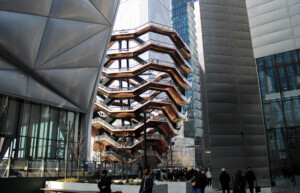An event this week at the Center for Architecture in New York shed light on the future of Fulton and Elliott-Chelsea Houses—three public housing developments spread across disparate sites in West Chelsea, Manhattan.
The gathering invited developers and designers to present proposals for their redevelopment, including Jamar Adams, founder of Essence Development; Jonathan Gouveia, NYCHA’s vice president of real estate development; Ruchika Modi, principal at Practice for Architecture and Urbanism (PAU); and Manish Chadha, principal at Ismael Leyva Architects (ILA). Related Companies is also a development partner on the project.
As reported by AN, the Fulton Elliott-Chelsea (FEC) Plan would convert 2,056 public housing units in Chelsea spread across 11 buildings—where approximately 5,000 people live—into “mixed-income” buildings under the PACT/RAD program. The FEC Plan would relocate Section 9 public housing residents into “income restricted” Section 8 units that neighbor new market rate units. After the event, a spokesperson for Essence confirmed to AN that PAU, COOKFOX, and ILA are the architectural design team behind the FEC Plan.
At Center for Architecture, Modi said that PAU’s design would convert the current “towers in the park” at Fulton and Elliott-Chelsea Houses into perimeter block buildings that are “more integrated” with the neighborhood, requiring total demolition in two phases. The future mixed-income community will have new healthcare services and grocery stores, as well as “enhanced security” managed by Essence and Related. At Fulton Houses, PAU has also proposed a linear park that would span the blocks between West 19th and 16th Streets.
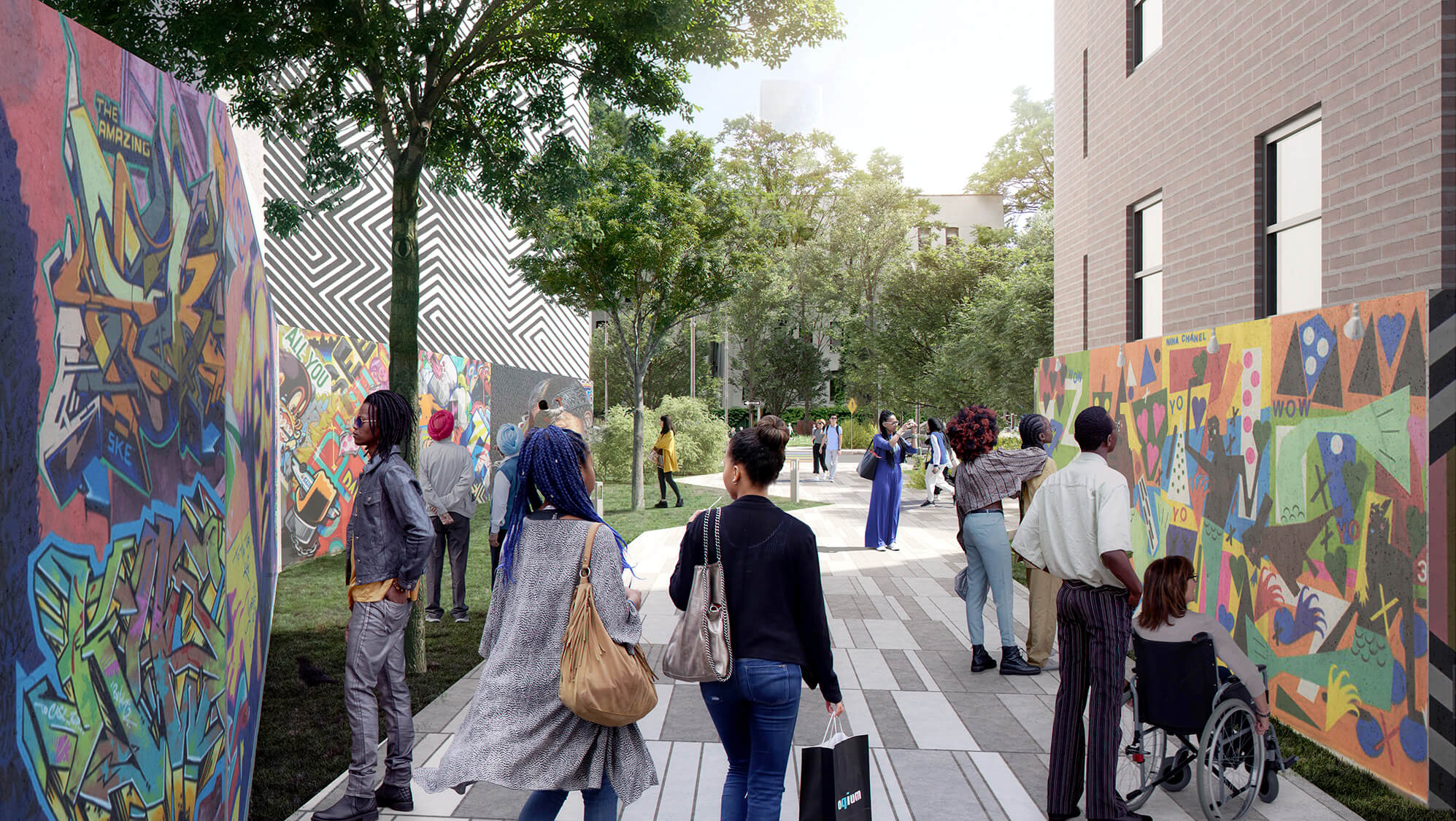
In January, the New York City Housing Authority gave notice of intent to prepare an Environmental Impact Statement (EIS) for its Fulton Elliott-Chelsea Houses redevelopment project, a major step toward realization of the master plan, though the venture has not been without controversy.
At the Center for Architecture event, Renee Keitt, a resident of Elliott-Chelsea Houses, voiced her opposition to the FEC Plan. Keitt noted that the demolition and subsequent disruption will create significant quality of life problems for NYCHA residents, among many other pressing social issues. “Please remember, we will have to be living with this for 16 years,” she said during the Q&A portion of the event, asserting that the project “plays into poverty, racism” and the “commodification of racialization.” Keitt called the FEC Plan a “proposed demolition that is the destruction of a community.” She continued: “Let’s be real: You’re destroying someone’s community.”
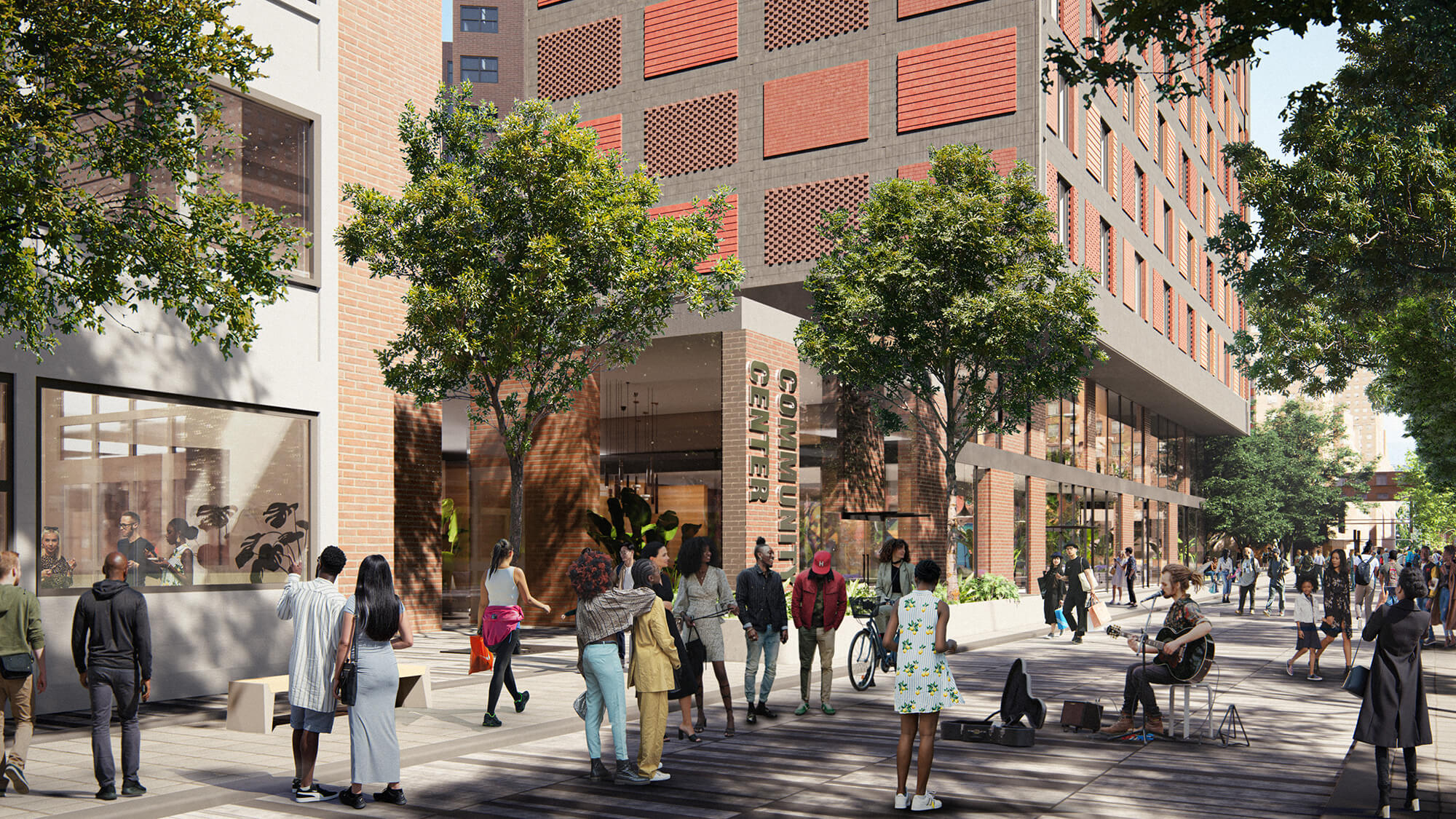
Despite pushback from residents, NYCHA officials and Jamar Adams have continuously heralded the FEC plan as a “resident-led” program. “From the very beginning, residents have been at the forefront of the comprehensive rebuild of their current buildings and campus,” Adams told AN after the EIS kicked off. “Continued input from residents and the wider community during the EIS process will further strengthen our plans to provide new and safe housing for all NYCHA residents in Chelsea. We look forward to continuing our work with residents, elected officials, and the entire community to fulfill the promise made to Fulton and Elliott-Chelsea tenants, ensuring they receive the new homes they deserve.”
While the architecture, amenities, and green spaces included in PAU’s renderings are enticing, many residents and legal experts have refuted these claims that the project is resident-driven. Last summer, Lucy Newman from the Legal Aid Society said: “This plan is unequivocally not resident-led, and is guaranteed to uproot the lives of thousands of vulnerable New Yorkers.”
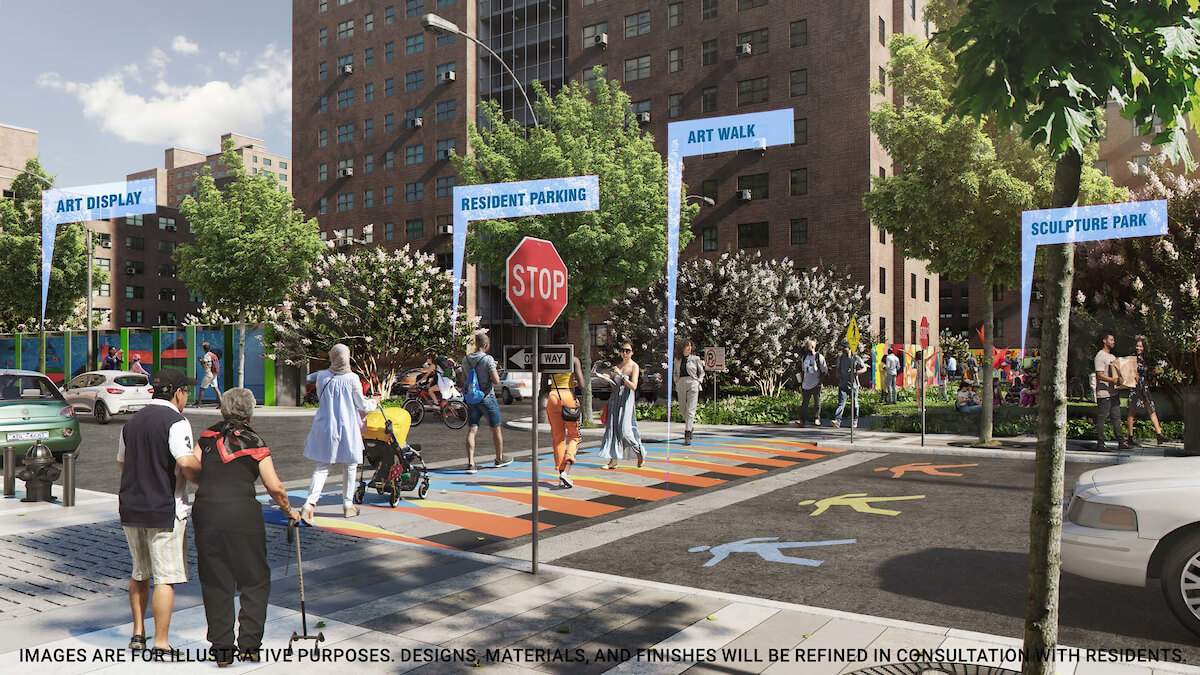
The FEC Plan is one of the largest projects to date under PACT/RAD, a program that Human Rights Watch and the National Housing Law Project has said harms public housing residents. In 2022, Human Rights Watch reported that PACT/RAD leads to a rollback of tenants’ rights and protections, and results in increased evictions.
Last September, AN reported that multiple tenants want a public resolution against the FEC Plan. These tenants believe their buildings can be saved and that the conditions of Elliott-Chelsea Houses are the result of decades of deferred maintenance on behalf of the city. Now, some tenants claim they’re being barred from community board meetings about the project. “They didn’t let me in,” Alexa Cruz, who’s lived in Chelsea Houses since 1969, said regarding a public hearing in November 2023 at the Fulton Senior Center. “There’s a lot of Hispanic people that don’t speak English that are afraid to come forward,” Cruz told AN.
Cruz said she’s fighting the FEC Plan because she doesn’t want to leave her home, and because Section 9 affords her vital protections that she wouldn’t otherwise have with Section 8 vouchers. “Affordable [housing] from what I understand is for people who make $75,000 a year. We cannot afford that,” Cruz said. “So what happens to us? We go homeless. We go into the streets after they start charging those rates. Where am I going to go? A nursing home? I’m not going to go. No, no, no!”
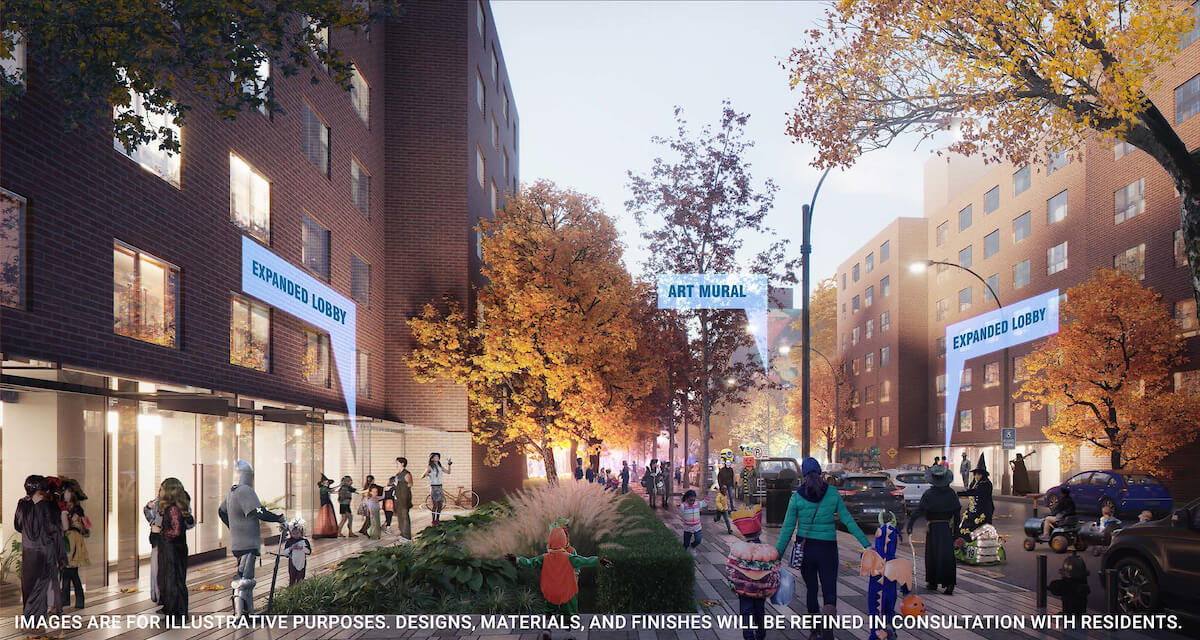
Many NYCHA residents do support the FEC plan, precisely because of the physical conditions they’re experiencing: Many see the promise of new buildings as a way to reclaim a standard of living that they’ve long been denied.
George Figueroa, a retired MTA employee who has lived at Elliott-Chelsea Houses since 1974, supports the FEC Plan. Figueroa is hopeful about the new amenities that the new buildings will deliver, including reliable elevators, ADA compliance, cooling systems, security, and other features. “These buildings were built in the 1960s,” Figueroa told AN. “Over the years I’ve watched them fall into disrepair. The ceiling right above me caved in, and every time I flush the toilet, I have water leaking right on top of me.”
Figueroa further noted the considerable amount of asbestos inside the buildings would make renovating them difficult. “If they want to repair these buildings, they’re gonna have to replace all the plumbing and electrical systems,” Figueroa continued. “To do that they have to break walls down.”
Mike Noble, a member of Manhattan Community Board 4, also supports the FEC Plan. Noble said that he too is disappointed by the current state of the buildings and sees demolition as a good solution. “There was a time when a super used to live in this development,” Noble told AN. “He was there when the boilers would break down. He’d restore heat and hot water. So they had somebody living here to take care of these things. There also used to be a police precinct.”
Noble continued, “People feel helpless, but I’m still optimistic about getting stuff done. People will have a much nicer place to live, and everything is going to be so much better if given a chance.”
Correction: A previous version of this article stated that Alexa Cruz is a resident of Fulton Houses. This is incorrect: Cruz is a resident of Chelsea Houses. The article was amended on March 15 to reflect this.









